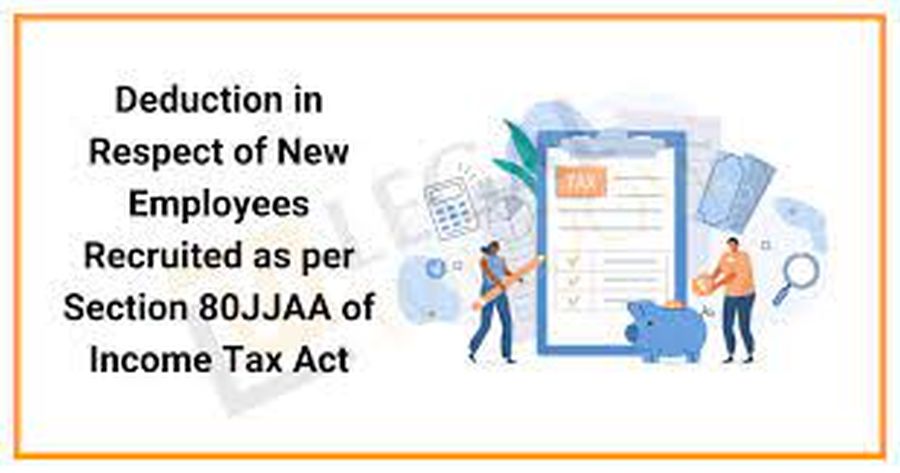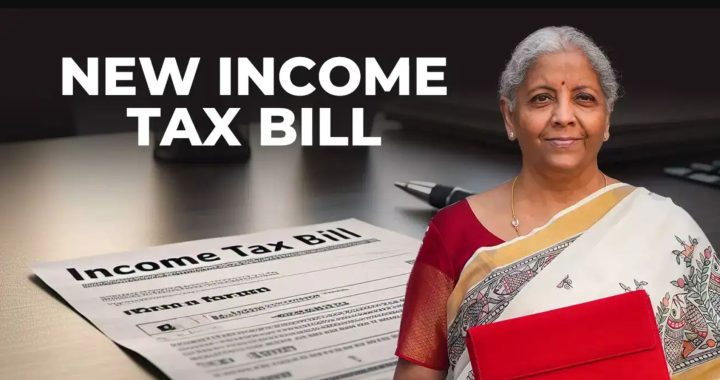Boost Your Business & Reduce Taxes: A Guide to Maximizing Benefits Under Section 80JJAA

Ḍeduction us 80JJAA
Section 80JJAA of the Income Tax Act, 1961 offers tax benefit to businesses that create new jobs in the formal sector. It allows a deduction of 30% on additional employee costs incurred for hiring new employees, spread over three consecutive assessment years. This translates to a total tax benefit of 90% including the year in which the new hires were made.
Section 80JJAA: Encouraging Job Creation Through Tax Benefits
Section 80JJAA of the Income Tax Act, 1961, serves as a government incentive for businesses to expand their workforce and contribute to formal job creation. Let’s delve deeper into the specifics of this deduction:
Eligibility conditions for deduction u/s 8JJAA:
Nature of Business eligible for 80JJAA benefit:
This deduction is applicable to businesses and to whom section 44AB applies (i.e. is liable for tax audit).
To encourage Job Creation and to Compensate against Increase in Employee Costs:
The benefit applies only to the additional employee expenses incurred compared to the previous year. This means simply maintaining the existing workforce won’t qualify.
Quantum of Deduction u/s80JJAA:
Percentage: A deduction of 30% of the additional wages paid to new regular employees is allowed.
Wages Considered: The additional wages include salaries, allowances, and other perquisites taxable as income under the head “Salaries” as defined in the Income Tax Act.
Benefit of 80JJAA spread of three years to encourage manpower retention for longer period: The deduction is spread over three consecutive assessment years. This incentivizes businesses to retain the newly hired employees for a longer period.
The first year of deduction is the assessment year relevant to the previous year in which additional employment was provided, the subsequent year, and the year after that.
Mandatory Conditions to claim benefit u/s 80JJAA:
- Businesses deriving income from business and be subject to Tax Audit.
- The business should have functioned for a minimum of 240 days in the previous year and should be employing minimum ten persons.
- No deduction under Section 80JJAA should have been claimed in the preceding financial year.
- The business should be registered under the Employees’ Provident Funds and Miscellaneous Provisions Act, 1952.
- The deduction isn’t available for businesses that are a result of a transfer of ownership or reconstruction of an existing business. This aims to prevent misuse of the scheme.
What Doesn’t Qualify as Additional Employee Cost:
- The additional employee cost excludes any one-time payments such as gratuity, severance pay, leave encashment, or retrenchment benefits.
- Expenses incurred for training or skill development of new employees are also not considered as additional employee cost under this section.
- Any fringe benefits provided to employees beyond their basic salary and allowances, such as company car, club memberships, etc.
- Costs associated with recruiting new employees, such as advertising fees, agency charges, etc., are not considered.
- The employer’s share of contributions to Provident Fund (PF) and Employee State Insurance (ESI) doesn’t qualify as emoluments for this section.
- Payments made to employees at the time of termination, such as gratuity, severance pay, leave encashment, voluntary retrenchment benefits, or commutation of pension.
Calculating Additional Employee Cost
To determine the additional employee cost for claiming the deduction under Section 80JJAA, businesses can follow these steps:
Gather Employee Cost Data:
Collect data on the total employee cost incurred in the current year and the previous year including all the components as basic salary, allowances, employer’s contribution to social security schemes, etc.
Calculate the Difference: Subtract the total employee cost of the previous year from the total employee cost of the current year. This difference represents the total increase in employee expenses.
Identify Eligible Employee Cost: Analyze the total increase in employee expenses to isolate the cost associated with the new eligible employees hired in the current year. This might involve separating the salaries and allowances paid to new employees from the existing workforce.
Additional Employee Cost: The amount identified in step 3 represents the “additional employee cost” eligible for claiming the deduction under Section 80JJAA.
Key Points to Remember for making claim of deduction u/s 80JJAA of Income Tax Act
- Only the incremental cost associated with new eligible employees qualifies for the deduction under Section 80JJAA.
- The additional employee cost should be supported by proper documentation, such as salary slips, allowance breakup, and PF contribution challans.
- Businesses should carefully review the eligibility criteria for both employers and employees to ensure they can claim the deduction.
- Minimum Work Period: They must be employed for more than 240 days (or 150 days in specific sectors like apparel, footwear, or leather products) in the previous year. This indicates a certain level of commitment from both the employer and employee.
- Provident Fund Participation: They must be contributing to a recognized Provident Fund scheme. This aligns with the government’s objective of promoting social security for employees.
Employees Excluded from “Additional” Category:
The following categories of employees wouldn’t be considered “additional” even if they are new hires:
- Employees drawing monthly salary exceeding Rs. 25,000.
- Employees who worked for less than the minimum required period (240/150 days) in the previous year. It is to be understood that any leaves taken during the employment period shall not be adjusted to calculate employment period of 240/150 days. This proviso can be misused
- Casual workers who are not enrolled in a recognized Provident Fund scheme wouldn’t be considered “additional.”
- Government Pension Scheme Beneficiaries: If the entire employee’s pension contribution is borne by the government under the Employees’ Pension Scheme (EPS), their cost wouldn’t be part of the additional employee cost.
Here are some key aspects of the Auditors Report required under Section 80JJAA:
Certification by a Chartered Accountant (CA): The report must be certified by a Chartered Accountant (CA) as defined under the Chartered Accountants Act, 1949.
Specific Particulars to be mentioned in report by Chartered Accountant: The report must contain specific details as may be prescribed by the Income Tax Department. These details typically include:
- Information about the business, such as name, PAN number, and nature of business.
- Confirmation that the business meets all the eligibility criteria laid out in Section 80JJAA.
- Details of the new employees hired in the previous year, including their names, employee IDs, monthly salaries, and days worked.
- Calculation of the additional employee cost incurred for the new eligible employees. This calculation must exclude the items not forming part of remuneration as discussed above.
- The CA must verify the information provided by the business and ensuring the accuracy of the additional employee cost calculation, confirm reviewing relevant documents like salary slips, allowance breakup statements, and PF contribution challans.
Due date of filing Return for Section 80JJAA deduction
The due date for filing a return to claim the deduction under Section 80JJAA of the Income Tax Act is aligned with the applicable deadline for the assessee’s return filing under section 139(1).
There are many ambiguities in the provisions governing deduction u/s 80JJAA of Income Tax Act 1961
- Assessee “A” fulfills all conditions for claiming deduction u/s 80JJAA but not subject to TAX Audit due to lesser turnover is not eligible to get benefit u/s 80JJAA. In case an assessee fails to get deduction in first year due to no Tax Audit being applicable, will he be able to get deduction in second and third year when Tax Audit becomes applicable?
- Another viewpoint is litigative in nature asserting that deduction will be available for the two subsequent years since section puts a condition of employment only for the first year irrespective of the fact whether the employee continues to be in employment or not for the remaining years.
OR
The assessee will be refrained from claiming deductions for the two following years, as it is believed that doing so would undermine the intended purpose of the law to generate employment and employee retention.
3. Where the total emoluments of employees increase to Rs. 26,000 per month from Rs. 24,000 per month. Whether company will be eligible for deduction in second and third year (subsequent years)? In this case in most assessments it has been held that Assessee will be eligible for the deduction in the second and third year since the section puts a condition only for the first year there is increase in total number of employees.
4. What if an employee is hired at Salary lesser than Rs 25,000 during the year but he gets a raise effectively increasing his wage to Rs 26,000/-. In this case, most judgments have held that he would fall outside the definition of “additional employee”.
5. Will deduction under section 80JJAA be considered business- wise or for an assessee who is operating multiple businesses under one PAN? There could be a situation where one business segment may be experiencing a net increase in the workforce, while another might be reducing its workforce. If we assess eligibility at the overall assessee level, it could result in a situation where the total number of employees decreases, leading to the inapplicability of the deduction for that assessment year.
- Section 80JJAA uses the words “profits and gains derived from business” rather than “profits and gains from business or profession”. This often leads to confusion that whether an assessee carrying on profession can claim the deduction u/s 80JJAA? More specifically, this question becomes relevant as section 80JJAA refers to section 44AB and that section makes a distinction between business and profession by prescribing separate gross receipts threshold limit for tax audits of persons carrying on business and persons carrying on profession.
In this regards, following details will be helpful to resolve the issue:
The Notes on Clauses to Finance Bill, 2016 clarifies that “It is proposed to extend the benefit to all assessees who are required to get their accounts audited under section 44AB.”
The Finance Minister’s Budget Speech of Union Budget, 2016, clarifies that “The deduction will be available not only to assessees deriving income from manufacture of goods in a factory but to all assessees who are subject to statutory audit under the Act. [Para 67 of the Union Budget Speech, 2016]
CBDT’s Explanatory Notes on Finance Act, 2016, in Circular No.3/2017, dated 20-1-2017, explain the rationale of substituted section 80JJAA as “With a view to encourage employment generation and provide incentive to all sectors”. The Explanatory Memorandum to Finance Bill, 2016 also states that the objective of substituting section 80JJAA is “With a view to extend this employment generation incentive to all sectors”. This is also clear from replacement of “new workmen” with “new employees” in the marginal note in the substituted section.
These details show an unmistakable intent to extend the employment generation incentive in section 80JJAA to all sectors including professional services. Therefore, it is possible to take a view that section 80JJAA also applies to persons carrying on a profession who is liable to tax audit.


 ITAT Amritsar: No Section 269SS Violation for One-Time Cash Payment Before Sub-Registrar
ITAT Amritsar: No Section 269SS Violation for One-Time Cash Payment Before Sub-Registrar  Tax Officials Unleash Digital Dragnet: How New Raid Powers Redefine Privacy, Property Rights in India and likely to Fuel Corruption
Tax Officials Unleash Digital Dragnet: How New Raid Powers Redefine Privacy, Property Rights in India and likely to Fuel Corruption  Income Tax Department Rewards for Reporting Tax Evasion: A Comprehensive Guide
Income Tax Department Rewards for Reporting Tax Evasion: A Comprehensive Guide  Forfeiture of Gratuity by Employer- What are the Remedies for an employee- Can employer be challenged?
Forfeiture of Gratuity by Employer- What are the Remedies for an employee- Can employer be challenged?  Employer can forfeit gratuity of an employee in case of moral turpitude
Employer can forfeit gratuity of an employee in case of moral turpitude  Diving Deeper: The Impact of the New Tax Bill on Dairy and Farming Income
Diving Deeper: The Impact of the New Tax Bill on Dairy and Farming Income